Historic Cafés in Paris
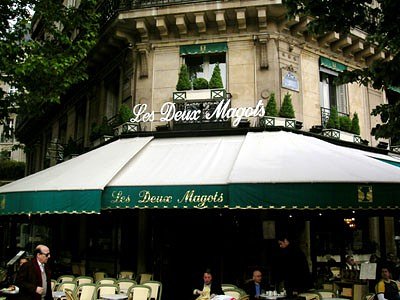
Sun 21 Mar 2010
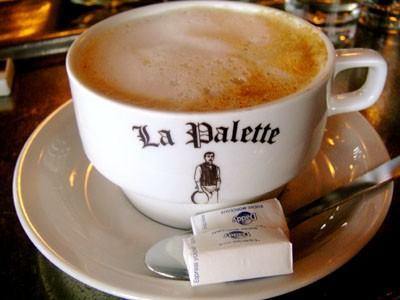
The Paris café is an institution. No trip to the City of Light would be complete without visiting at least one. Most cafés keep continuous hours, making them a perfect spot for a full meal, an afternoon coffee or an aperitif. Rows of snugly placed tables and chairs sit facing the street as if beckoning passersby to an upcoming performance of Parisian street theatre. Locals have their favorite neighborhood haunts—each one offering a different vibe. Why not experiment and find yours? Start with these tried-and-true options, many of which have been an important part of Parisian culture for upwards of a hundred years.
La Closerie des Lilas
La Closerie des Lilas, located in Montparnasse, is named for its beautiful enclosed lilac garden. In fact, the café (which opened in 1847) claims to have established the reputation of Montparnasse because of its proximity to one of the most famous balls of its time, the Bullier Ball. In the early 20th century, literary giants such as Hemingway, Miller and Apollinaire and artists including Cézanne and Picasso mingled with the bourgeoisie. Over the years Tuesdays became known as the day when poets, artists and great thinkers of all nationalities would gather for readings and discussions of some of the most exciting theories of their time. Those looking to follow in the footsteps of Hemingway, who lived in a nearby flat, can grab a stool at the polished mahogany bar, where a brass plaque engraved with his name marks his favorite spot. In the nicer weather, pull up a chair on the secluded terrace, where Hem himself wrote undisturbed for hours. There are two distinct sides to La Closerie. The less expensive brasserie, with its dark, smokey atmosphere, dim lighting and leather banquettes, gives off an understated vibe of luxury, enlivened by the chatty crowd, clinking glasses and the piano bar, where you can hear jazz nightly after 7 p.m. Classics like steak tartare, eggs with mayonnaise and terrines grace the menu. The more upscale restaurant consists of bright crimson seating, crisp white linens and formal waitstaff. Here you’ll find lobster, Filet de Boeuf Hemingway (made with bourbon!) and classic desserts like crêpes suzette and baba au rhum.
Café de Flore
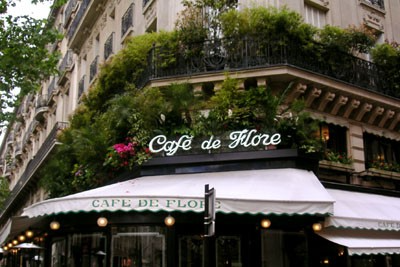
Another landmark café, the chic Café de Flore, has been a fixture on the busy boulevard St.-Germain since it opened in the late 1800s. The classically dressed waiters don black vests and pants, white shirts and long white aprons. The smoky ambience of the Flore, with its art deco interior—including period lighting, mirrors, mahogany and red banquettes—hasn’t changed much over the years. This upscale café is always bustling with a mix of young couples, well-dressed ladies, prosperous-looking businessmen and tripists. The sunny terrace is a popular spot for dining on a simple omelette and glass of champagne while watching the museum of life in Paris go by. Have your own story to tell? Head upstairs to the quiet second-floor dining room, where literary greats once spent hours writing.
Les Deux Magots
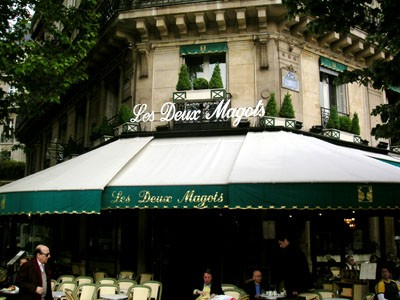
Flore’s rival, located right around the corner, is the equally famous Les Deux Magots. The café began as a drapery store and turned into a wine merchant before becoming a café in 1914. Though it had a later start than its counterpart, Deux Magots quickly attracted the same literary clientele, including Apollinaire, Hemingway and André Gide. Every year since 1933, the café has awarded a literary prize called the Deux Magots to contemporary authors of offbeat works. The inside is brightly lit and the decor understated, with creamy walls, cognac-colored banquettes and burgundy velvet drapes. Half of the wraparound terrace overlooks the aptly named Place Sartre-Beauvoir—who were also regulars—and offers lovely views of the square and church of St.-Germain-des-Prés. You can catch a glimpse of the café in the 1995 remake of Sabrina.
Bouillon Chartier
Though it’s more brasserie than café, Chartier deserves a spot on any eatery list. Now a historic monument, Chartier began in 1896 as a place to serve the working class a simple hot dish of boiled meat and vegetables (called a bouillon) for a very low price—think soup kitchen, not Michelin stars. Though the clientele has diversified and the menu has broadened (as have the lines—reservations are not accepted), this Montmartre brasserie stays true to its roots with prices that are still a bargain. If you are adventurous and looking to try traditional dishes like sweetbreads, lambs’ brains, tongue or tripe, you’ve come to the right place. Safer options like coq au vin and Boeuf Bourguignon are also on offer. The interior looks like a typical brasserie: think lots of brass, tall mirrors, banquettes, art deco globe lighting, whimsical wall murals and glass ceilings. In keeping with the owner’s desire to create a homey atmosphere, however, you won’t find any crystal glasses, fancy silverware or white tablecloths. Instead it’s pink tablecloths, paper menus and plain white plates with nary a logo. The owner has even retained the original wooden apothecary-like numbered drawers, where loyal customers were able to store their personal napkins.
La Palette
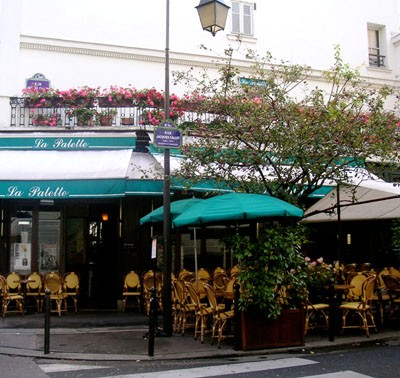
The appropriately named La Palette pays homage to the art community. Its proximity to the École des Beaux-Arts and its quirky, laid-back atmosphere made it a favorite among students as well as figures such as Picasso, Hemingway and even Jim Morrison. This café/bistro has been going strong for more than 100 years and hasn’t changed much since then. The inviting and worn decor includes an eclectic mix of art, mirrors, dim lighting, mosaic-tiled floors, warm wood and a zinc bar, which hides a steep stairwell that leads to the storage cellar. There is even a framed artist’s palette hanging over the bar. Make your way to the back room to see the stunning ceramic panels created by Salcedo. La Palette serves up good, simple French food at prices anyone can afford. Grab a coffee and baguette with butter and jam for breakfast or, during the day, a simple plat du jour or tartine (open-face sandwich). To experience the “real” Palette, spend time inside among the students and gallery owners. In the warmer months, claim a spot under the trees and among the trellised roses on the sidewalk terrace.
Café de la Paix
Café de la Paix, declared a historic landmark by the French government in 1975, is located near Opéra Garnier, in the 9th Arrondissement. Originally opened in 1862 to serve the Grand Hotel, Paix eventually attracted the likes of Emile Zola and Guy de Maupassant—even the prince of Wales. In 1948 the restaurant was the setting for a live radio show broadcast from France to the US, hosted by Maurice Chevalier. The decor is chic and retains its Second Empire grandeur—think lots of gilt, frescoes and touches of emerald green and burgundy. The menu is a mix of contemporary and classic gourmet cuisine, often adapted for seasonal ingredients. The café boasts two terrace options—a covered inside and an open-air outside—both offering views of the Opéra Garnier, which is magical in the late evening. Either terrace would be perfect for an aperitif before or after a show.
INFO
La Palette
43, rue de Seine, in the 6th. 01 43 26 68 15.